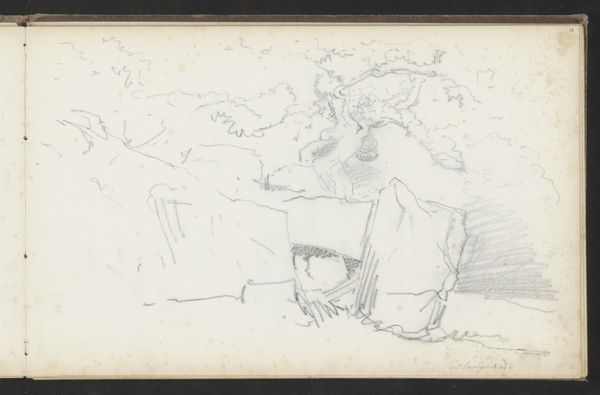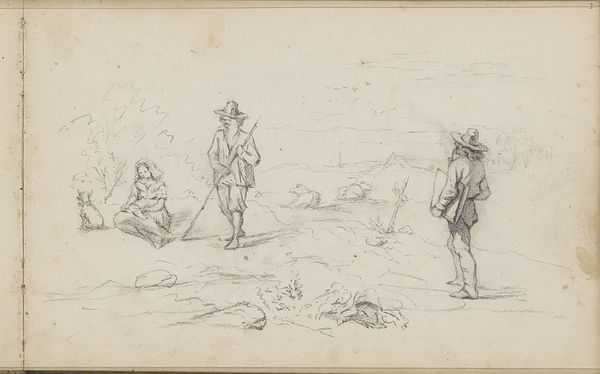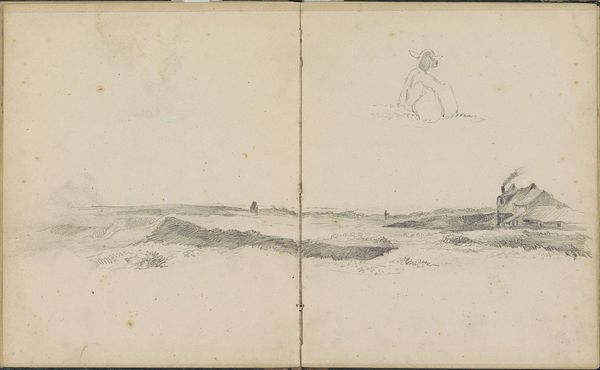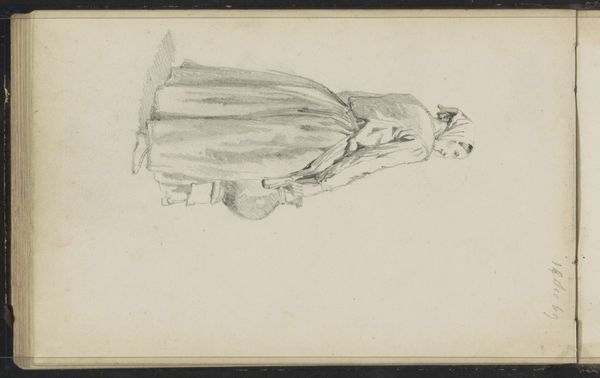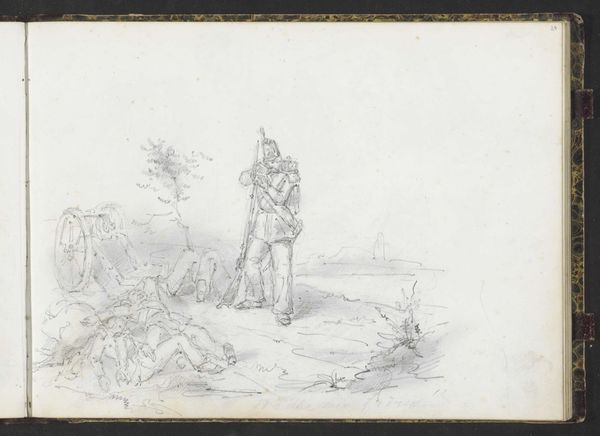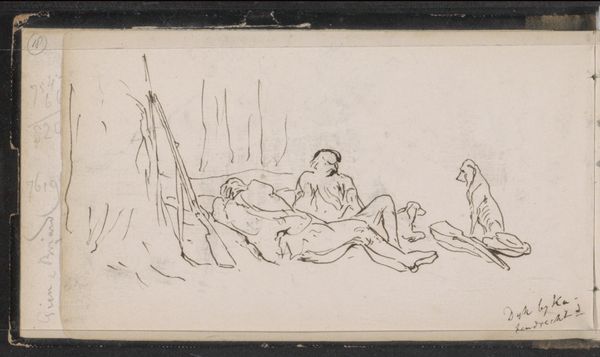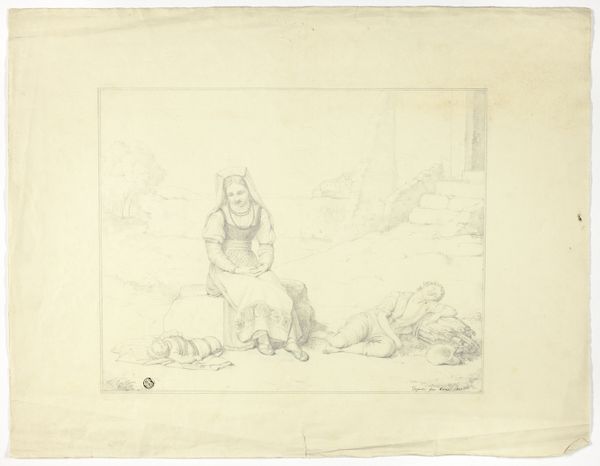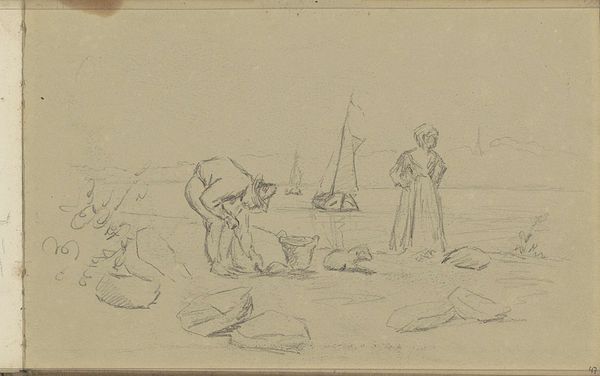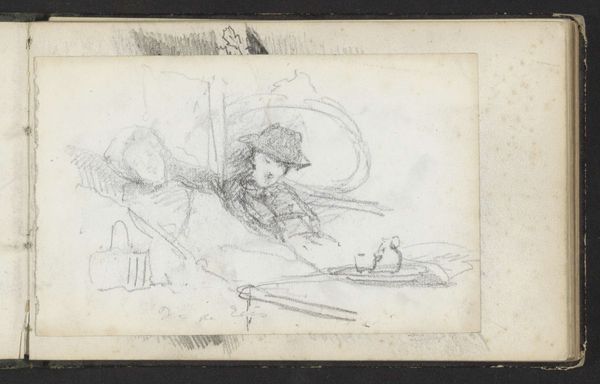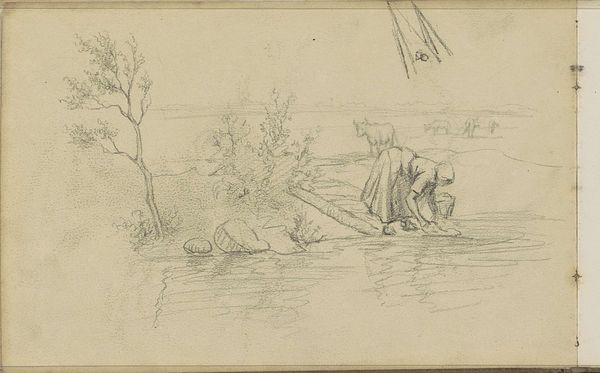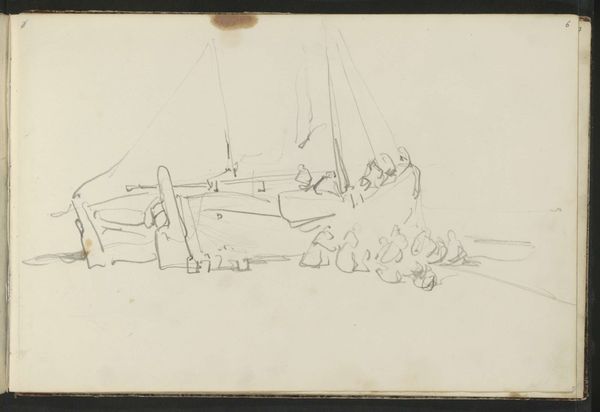
drawing, paper, pencil
#
drawing
#
landscape
#
figuration
#
paper
#
romanticism
#
pencil
#
watercolor
Copyright: Rijks Museum: Open Domain
Editor: So, here we have "Landscape with a Seated Girl near a Stack of Peat," a pencil drawing on paper from around 1803-1818 by Arnoldus Johannes Eymer. There's a sort of wistful melancholy to the piece. What do you see in this work that perhaps I'm missing? Curator: I see a quiet indictment of labor and gender. Look at the figure—hunched, almost blending into the peat stack, suggesting a life deeply intertwined with manual labor. The Romantic period often idealized nature, but this image subtly acknowledges the realities of peasant life and labor in that nature, wouldn't you agree? Editor: Absolutely. There's no heroic quality to her labor, but the image is gentle. How do we read this interplay between a kind Romantic gaze and social observation? Curator: Consider the economic and social constraints on women in the early 19th century. Her posture, her location—it’s a silent narrative about limited opportunities. Does the bottle placed to her left symbolize the bottle half-full or half-empty, and for whom does the image speak? Editor: That’s a really interesting point! The bottle could signify both respite and dependence. So this drawing isn’t just a landscape, but a commentary on the female condition? Curator: Precisely. The "misty view", as the handwritten note suggests on the artwork, can speak volumes, if you allow it to, with questions around freedom, choice, and societal expectations, challenging idealized portrayals of the rural existence through its grounded, arguably sober, realism. Editor: I now perceive so much more nuance, a sense of complexity, in an image that first felt very simple and straightforward. Thank you for making visible what had been almost invisible to me. Curator: My pleasure! It is these untold stories and often unseen laborers that allow history to become more real, so that the romantic era in art remains more tangible and relative.
Comments
No comments
Be the first to comment and join the conversation on the ultimate creative platform.

